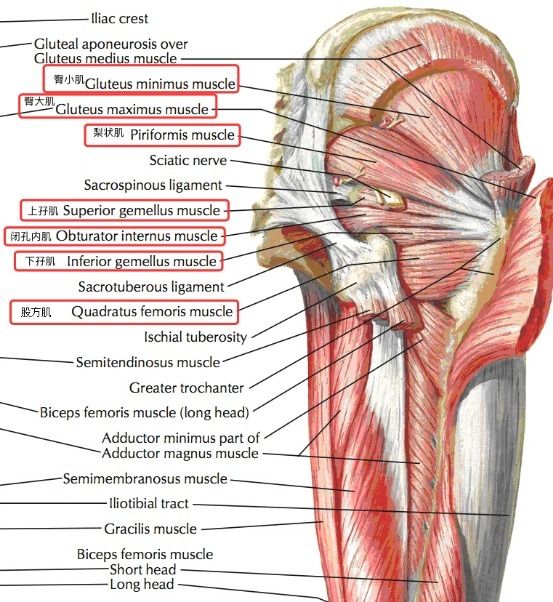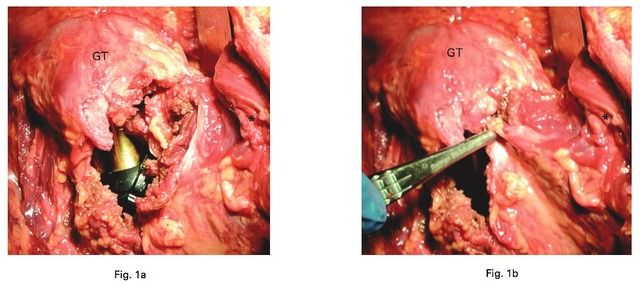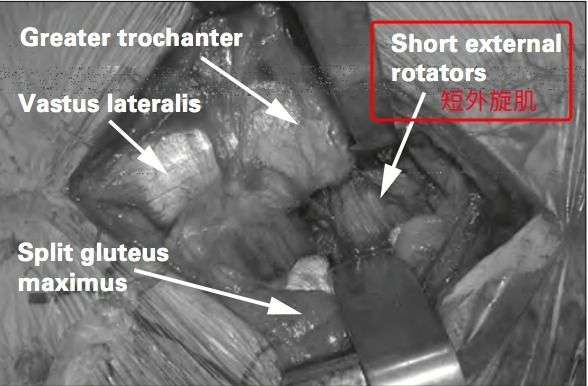Аз замони он ки Скулко ва ҳамкоронаш бори аввал дар соли 1996 дар бораи артропластикаи пурраи рон (THA) бо буриши хурд бо усули постеролатералӣ гузориш доданд, якчанд тағйироти нави каминвазивӣ гузориш дода шудаанд. Имрӯзҳо, мафҳуми каминвазивӣ ба таври васеъ паҳн ва тадриҷан аз ҷониби табибон қабул карда шудааст. Бо вуҷуди ин, то ҳол дар бораи истифодаи расмиёти каминвазивӣ ё анъанавӣ қарори возеҳе вуҷуд надорад.
Бартариҳои ҷарроҳии ҳадди ақали инвазивӣ буришҳои хурдтар, хунравии камтар, дарди камтар ва барқароршавии зудтарро дар бар мегиранд; аммо, нуқсонҳо майдони маҳдуди биниш, осеби тиббии асаб ва рагҳои хунгузар, мавқеи нодурусти протез ва хатари афзояндаи ҷарроҳии аз нав барқароршавандаро дар бар мегиранд.
Дар ҷарроҳии умумии буғуми хуч (MIS – THA), аз даст додани қувваи мушакҳо пас аз ҷарроҳӣ сабаби муҳиме мебошад, ки ба барқароршавӣ таъсир мерасонад ва равиши ҷарроҳӣ омили муҳиме мебошад, ки ба қувваи мушакҳо таъсир мерасонад. Масалан, равишҳои пешу паҳлӯӣ ва мустақими пешӣ метавонанд ба гурӯҳҳои мушакҳои абдуктор зарар расонанд, ки боиси роҳгардии ларзон (лангиши Тренделенбург) мегардад.
Дар талош барои ёфтани равишҳои ҳадди ақали инвазивӣ, ки осеби мушакҳоро ба ҳадди ақал мерасонанд, доктор Аманатуллоҳ ва ҳамкоронаш аз клиникаи Майо дар Иёлоти Муттаҳида ду равиши MIS-THA, равиши мустақими пешӣ (DA) ва равиши мустақими болоӣ (DS)-ро дар намунаҳои мурда муқоиса карданд, то осеби мушакҳо ва пайвандҳоро муайян кунанд. Натиҷаҳои ин таҳқиқот нишон доданд, ки равиши DS нисбат ба равиши DA ба мушакҳо ва пайвандҳо камтар зарар мерасонад ва метавонад равиши бартарӣ барои MIS-THA бошад.
Тарроҳии таҷрибавӣ
Таҳқиқот дар ҳашт ҷасади нав яхкардашуда бо ҳашт ҷуфт 16 рон, ки таърихи ҷарроҳии рон надоштанд, гузаронида шуд. Як рон ба таври тасодуфӣ барои гузаронидани MIS-THA тавассути усули DA ва дигаре тавассути усули DS дар як ҷасад интихоб карда шуд ва ҳамаи амалиётҳо аз ҷониби табибони ботаҷриба анҷом дода шуданд. Дараҷаи ниҳоии осеби мушакҳо ва пайвандҳо аз ҷониби ҷарроҳи ортопедӣ, ки дар амалиёт иштирок надошт, арзёбӣ карда шуд.
Сохторҳои анатомии арзёбӣшуда инҳоро дар бар мегирифтанд: gluteus maximus, gluteus medius ва пайи он, gluteus minimus ва пайи он, vastus tensor fasciae latae, quadriceps femoris, трапецияи болоии болоӣ, piatto, трапецияи поёнӣ, obturator internus ва obturator externus (Расми 1). Мушакҳо аз рӯи кандашавӣ ва нармии мушакҳо, ки бо чашми бараҳна намоёнанд, арзёбӣ карда шуданд.
Расми 1. Диаграммаи анатомии ҳар як мушак
Натиҷаҳо
1. Осеби мушакҳо: Дар дараҷаи осеби сатҳии мушакҳои миёнаи gluteus байни равишҳои DA ва DS фарқияти оморӣ вуҷуд надошт. Аммо, барои мушакҳои gluteus minimus, фоизи осеби сатҳии ба вуҷуд омада аз равиши DA ба таври назаррас баландтар аз он чизе буд, ки аз равиши DS ба вуҷуд омадааст ва байни ин ду равиш барои мушакҳои чорсари мушк фарқияти назаррас вуҷуд надошт. Аз ҷиҳати осеби мушакҳои чорсари мушк фарқияти оморӣ вуҷуд надошт ва фоизи осеби сатҳии мушакҳои vastus tensor fasciae latae ва rectus femoris бо равиши DA нисбат ба равиши DS бештар буд.
2. Ҷароҳатҳои пайванд: Ҳеҷ яке аз ин равишҳо боиси ҷароҳатҳои ҷиддӣ нашуданд.
3. Буридани пайванд: Дарозии буриши пайванди gluteus minimus дар гурӯҳи DA нисбат ба гурӯҳи DS ба таври назаррас баландтар буд ва фоизи ҷароҳат дар гурӯҳи DS ба таври назаррас баландтар буд. Дар ҷароҳатҳои буриши пайванд байни ду гурӯҳ барои пириформис ва обтуратори дохилӣ фарқияти назаррас вуҷуд надошт. Схемаи ҷарроҳӣ дар расми 2 нишон дода шудааст, расми 3 равиши анъанавии паҳлӯӣ ва расми 4 равиши анъанавии қафоро нишон медиҳад.
Расми 2 1a. Буриши пурраи пайванди хурди gluteus ҳангоми амалиёти DA аз сабаби зарурати фиксатсияи феморалӣ; 1b. Буриши қисман аз пайванди хурди gluteus, ки дараҷаи осеби пайванд ва шиками мушакҳои онро нишон медиҳад. gt. трохантери калонтар; * gluteus minimus.
Расми 3. Нақшаи равиши анъанавии мустақими паҳлӯӣ бо ацетабулум дар тарафи рост бо кашиши мувофиқ намоён аст.
Расми 4. Фош кардани мушакҳои кӯтоҳи берунаи гардишкунанда дар равиши анъанавии қафои THA.
Хулоса ва оқибатҳои клиникӣ
Бисёре аз таҳқиқоти қаблӣ ҳангоми муқоисаи THA-и анъанавӣ бо MIS-THA фарқиятҳои назаррасеро дар давомнокии ҷарроҳӣ, назорати дард, суръати трансфузия, талафоти хун, давомнокии бистарӣ дар беморхона ва роҳгардӣ нишон надодаанд. Тадқиқоти клиникии THA бо дастрасии анъанавӣ ва THA-и ҳадди ақали инвазивӣ аз ҷониби Репантис ва дигарон, ҳеҷ фарқияти назаррасеро байни ин ду нишон надодааст, ба истиснои коҳиши назарраси дард ва ҳеҷ фарқияти назаррасе дар хунравӣ, таҳаммулпазирии роҳгардӣ ё барқарорсозии баъдиҷарроҳӣ. Тадқиқоти клиникӣ аз ҷониби Гусен ва дигарон.
Ташхиси такрории хуни Гусен ва ҳамкоронаш афзоиши холҳои миёнаи HHS-ро пас аз усули каминвазивӣ нишон дод (ки ин нишон медиҳад, ки барқароршавии беҳтар беҳтар аст), аммо вақти тӯлонитари ҷарроҳӣ ва мушкилоти пеш аз ҷарроҳӣ ба таври назаррас бештар аст. Дар солҳои охир, инчунин таҳқиқоти зиёде анҷом дода шудаанд, ки осеби мушакҳо ва вақти барқароршавии баъдиҷарроҳиро аз сабаби дастрасии ҷарроҳии каминвазивӣ меомӯзанд, аммо ин масъалаҳо ҳанӯз пурра баррасӣ нашудаанд. Тадқиқоти мазкур низ дар асоси чунин масъалаҳо гузаронида шудааст.
Дар ин таҳқиқот муайян карда шуд, ки усули DS нисбат ба усули DA ба бофтаи мушакҳо зарари назарраси камтар расонидааст, ки инро бо зарари назарраси камтар ба мушакҳои gluteus minimus ва пайванди он, мушакҳои vastus tensor fasciae latae ва мушакҳои rectus femoris исбот мекунад. Ин ҷароҳатҳо аз ҷониби худи усули DA муайян карда шуданд ва пас аз ҷарроҳӣ таъмири онҳо душвор буд. Бо назардошти он, ки ин таҳқиқот намунаи ҷасад аст, барои таҳқиқи амиқи аҳамияти клиникии ин натиҷа таҳқиқоти клиникӣ заруранд.
Вақти нашр: 01 ноябри соли 2023














